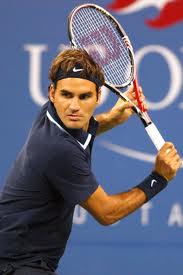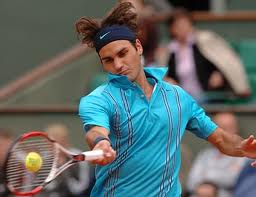Steal This Drill: Low Volleys
 Thursday, November 10, 2011 at 11:53AM
Thursday, November 10, 2011 at 11:53AM  CAtennis
CAtennis  The general consensus among most coaches (and players - current and former) who know a thing or two about the game of tennis is that up-and-coming juniors do not spend enough time honing their volley game. They learn to bash and belt from the baseline but anything inside of the service line is a foreign language to them.
The general consensus among most coaches (and players - current and former) who know a thing or two about the game of tennis is that up-and-coming juniors do not spend enough time honing their volley game. They learn to bash and belt from the baseline but anything inside of the service line is a foreign language to them.
What complicates the situation further is that the "modern" game (seriously, folks, Western grips and open stances have been around since tennis was played on wooden courts) seems to emphasize certain characteristics that do not translate to the volley game. For example, big backswings and open stances don't fit very well when playing at the net. Furthermore, too many players emphasize their forehand - thereby having a predetermined set-up - whereas the net requires a degree of neutrality in order to properly react to both sides relatively quickly.
Lastly, modern technology "evens out" the advantage between the baseline player and the net rusher. That's not to say that the attacking player receives no advantage but, as anyone who has grown up with a wooden racket in their hand would tell you, it was way more difficult to pass with a heavy, wooden racket - particularly when the defender was on the run.
Therefore, having a good technical foundation at the net is even more important nowadays than "back in the day." So here's a drill to teach you how to properly move, get low and "punch" the ball. Set up a cone around 8-9 feet from the net (orange circle). The feeder (red square) feeds soft, dipping balls side to side right when the player is ready to "round the cone" (blue line). In this drill, the player does not have a racket in hand. Instead s/he lunges forward and across (left foot on the forehand; right foot on the backhand) and catches the ball with BOTH hands (THIS IS IMPORTANT) out in front (the ball is discarded to the side).
This drill teaches the net player to: (1) ATTACK the volley with his legs; (2) make contact with the ball IN FRONT; (3) by using both hands to catch the ball, SQUARING the correct shoulder in front; (4) NOT OVERRUN the volley (lunge slows the forward momentum); and (5) focus on CORRECT recovery. As the player gets better, the cone can be pushed further back in order to simulate a different angle of attack. The racket can be introduced after the player masters the proper movement and upper body positioning (preventing the player from stabbing or flailing at the ball). Remember: Volleys = LEGS!
Here's the Beast from the East in action demonstrating proper execution of this drill:
ABOVE: knees bent (back knee is well below the front knee); arms in front; left shoulder in front.
ABOVE: power lunge forward with left foot; attacking the ball with both hands; back straight; head still. And notice the hind foot acting as an anchor (slowing down the forward momentum).
ABOVE: attacking the ball with right foot; both hands in front; right shoulder forward; ball is at eye level.
ABOVE: left knee WAY below the right knee (PERFECT positioning); attacking the ball with both arms in front of the body; ball is eye-level; perfect balance.





